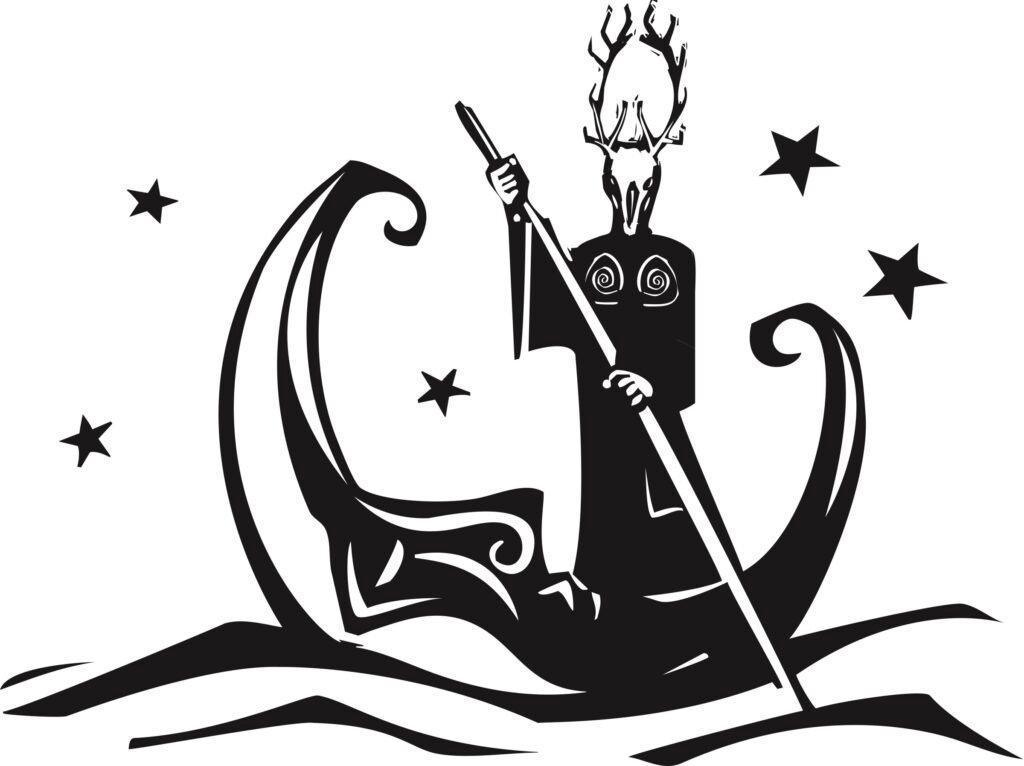Acheron holds a significant place in Greek mythology as the god of the river and lake of pain in the underworld. This powerful deity is closely associated with death, the afterlife, and the journey from life to death. In this comprehensive article, we delve into the many facets of Acheron, exploring its origin, role in mythology, symbolism, and significance in ancient Greek culture.
Acheron: The God and the River
Mythological Background
Acheron is the son of OKEANOS, the primal god of the great river that encircles the world and protogenos of the body of water. Born out of the union between OKEANOS and TETHYS, Acheron serves as the embodiment of his father’s river, ensuring the smooth passage of souls to the realm of the dead. The daemon Kharon, often depicted as an old man, ferries the souls across the dark waters of Acheron in his boat.
Acheron’s Children: Askalaphos
Acheron has two notable children, among whom is Askalaphos. In Greek mythology, Askalaphos is a daemon associated with the underworld. His presence further deepens the connection between Acheron and the realm of the dead.
Acheron in Ancient Greek Geography
Acheron appears in various forms in ancient Greek geography, all of which share a connection to the underworld. One such instance is the original Acheron river, located in Tesprotia. This river holds great significance as the entrance to the underworld, serving as a gateway for souls on their eternal journey. Such associations reinforce Acheron’s role as a conduit between the realms of the living and the dead.
Furthermore, there are references to multiple rivers named Acheron in ancient Greek geography. These rivers were interwoven into mythical narratives, reflecting the widespread belief in an underworld and the prominence of Acheron as a symbol for it.
Acheron’s Transformation
The original Acheron river in Tesprotia went through a transformation, becoming the river that bears its name today. This transformation occurred during the battle between the Titans and Zeus. Acheron played a role in the conflict by providing water to the Titans, thus granting them strength. However, their eventual defeat resulted in Acheron’s transformation into a river associated with pain, death, and the afterlife.
Acheron in Mythology
Acheron as a River of Hades
In Greek mythology, Acheron is often depicted as a river in the Underworld, flowing alongside the rivers Pyriphlegeton and Cocytus. It is considered the main river of Tartarus, the deepest and darkest section of the Underworld. The three rivers, including Acheron, play a significant role in the representation of the afterlife.
Acheron’s stature as the primary river of Tartarus further highlights its importance. From the Acheron river, two other prominent rivers of the Underworld—the Styx and Cocytus—originate. In later writings, Acheron becomes a general term for the entire Underworld, exemplifying its association with the realm of the dead.
Acheron and Acherousia
In addition to Acheron’s role as a river, the concept of Acherousia comes into play. Acherousia refers to several lakes and swamps believed to be connected to the Underworld. Among them, the Acherousia lake in Tesprotia gains particular significance as it is traversed by the river Acheron. These interconnected bodies of water, Acheron and Acherousia, are seen as gateways to the Underworld, further emphasizing their connection to the realm of the dead.
Acheron in Literature
References in Ancient Greek Poetry
Acheron’s presence extends beyond mythology and into ancient Greek poetry. Various fragments of Greek poetry make mention of Acheron, solidifying its importance in literature. One such example can be found in Homer’s Odyssey, where Acheron is depicted as the river by which souls of the dead are ferried to the Underworld.
Another notable reference to Acheron can be found in Plato’s “Phaedo.” In this dialogue, Plato portrays the idea of different rivers and lakes within the Underworld, further enriching the mythological landscape that encompasses Acheron.
Symbolism and Significance
Acheron as a Symbol of Death and Pain
As the god and river of pain in the Underworld, Acheron is intricately tied to the concept of death and suffering. It symbolizes the transition from life to death, representing the inevitability and inescapability of mortality. Acheron’s association with pain underscores the consequences of one’s actions in the afterlife, emphasizing the idea of cosmic justice.
Acheron as a Gateway to the Underworld
Acheron, as the entrance to the Underworld, plays a vital role in separating the realm of the living from the realm of the dead. It serves as a liminal space, marking the transition between life and death. The significance of Acheron in Greek beliefs about the afterlife cannot be overstated, as it embodies the threshold that individuals must cross in their journey to the realm of the dead.
Conclusion
Acheron stands as a prominent figure in Greek mythology and serves as a powerful symbol for the ideas of death, pain, and the afterlife. It is both the god and the river of the Underworld, overseeing the journey of souls and emphasizing the consequences of one’s actions. Acheron’s significance is further amplified by its association with Acherousia and its representation in literature. It is through Acheron that we gain insight into the complex belief system of ancient Greeks and their contemplation of the mysteries that lie beyond mortal life.
References
In preparing this article on Acheron, we referred to several authoritative sources:
- Graves, Robert. The Greek Myths
- Hesiod. Theogony
- Hamilton, Edith. Mythology: Timeless Tales of Gods and Heroes
- Ogden, Daniel. Drakon: Dragon Myth and Serpent Cult in the Greek and Roman Worlds
These works provided valuable insights into the mythology, geography, and symbolism surrounding Acheron and have greatly contributed to our understanding of this powerful deity.
